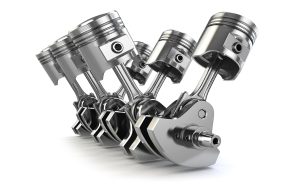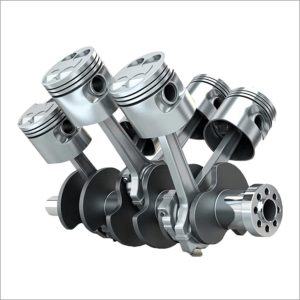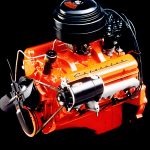Faster than a speeding bullet? More powerful than a locomotive? Well, not necessarily, but the piston in your car’s internal combustion engine is an impressive piece of technology. And you probably don’t know much more. Contributing editor Jeff Zurschmiede came up with these surprising facts.
For most car enthusiasts, the engine is a central point of interest in any car, and the pistons are the literal pumping heart of the engine.
Most people know how many pistons their engine has, and the total volume of air that those pistons displace as they move, but not many know a whole lot more than that.
To acquaint you with a little more about your car’s pistons, and to make you the most interesting person at any gathering, here are some facts that you might enjoy knowing.
Don’t blink or you’ll miss it
Bet you didn’t know you could walk as fast as the piston in an idling muscle car.
-
The piston is the fastest moving part of the engine. But you might be surprised at how slowly many pistons move. For example, a new Ford Coyote 5.0-liter V8 with a stroke of 3.6 inches can run at 6,000 rpm. That’s the redline. But even at 6,000 rpm, the average speed of a piston is only about 34 mph. When the engine is idling at 600 rpm, that average speed drops to only 3.4 mph – a steady walking speed.
- But remember that the piston slows down and stops moving briefly at the top and bottom of every stroke, so that’s an AVERAGE speed.
- Instead of the average, the absolute maximum piston speed of our Ford V8 at 6,000 rpm is still just 53.52 mph. That’s not only much slower than a bullet, it’s a boring freeway speed. For comparison, the maximum piston speed of a Chevrolet LT6 V8 at 8,600 rpm is 75 feet per second, or about 51 mph. Even a Formula One engine at 18,000 rpm is only moving the pistons at 85 mph maximum at mid-stroke.
- All that said, consider this: At 6,000 rpm, which is 100 revolutions per second, the piston is accelerating from zero to 50 mph and back to zero 200 times per second. The Ford V8 piston travels a total of 3.6 inches, so that’s 0-53 mph in 1.8 inches and in 1/400th of a second. 1/400th of a second is 2.5 milliseconds, and the blink of an eye takes about 100 milliseconds. In the time it takes to blink, each piston has accelerated 0-53-0 about 10 times at 6,000 rpm.
The really impressive part of all this is that those pistons will travel up and down billions of times in any long road trip, and they will continue to do their job for hundreds of thousands of miles and many years, to the point that we just take them for granted. But now you know a little more about the humble pistons in your car’s engine.






0 Comments